Tactical rocket-helicopter complex 9K53 "Luna-MV"
In 1960, the first flight was made by the Mi-6PPTBV helicopter - “Helicopter-type mobile missile-technical base”. The standard helicopter received a set of various equipment, with the help of which it could transport and serve missiles of various types used by several complexes. Such a mobile base could carry missiles and combat units, as well as carry out some operations to prepare them for use. However, the rocket could fit in the helicopter cargo compartments only on the transport carriage, and the launcher should be moved separately: it was too large and heavy for the Mi-6. For this and some other reasons, the Mi-6PRTBV helicopters did not go into series.
With all its advantages, the technical base of the helicopter type had a characteristic drawback in the form of the impossibility of transporting the entire rocket complex as a whole. At the same time, the air transport complex was of great interest to the troops, since it could seriously increase their impact potential. As a result, there was a proposal to develop a promising tactical complex with the required firing characteristics and the smallest possible dimensions that would allow it to be transported by helicopters.
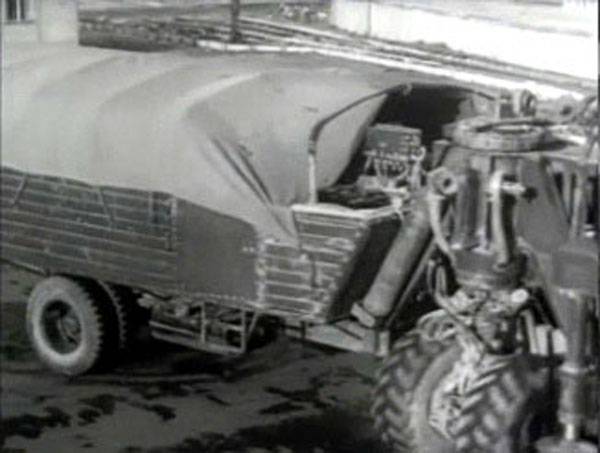
The first prototype advanced chassis for launcher 9P114
As a basis for a promising missile system, it was proposed to use the Luna-M 9K52 complex developed at that time. He planned to borrow a rocket, some launcher units, etc. Self-propelled launcher required to develop from scratch, taking into account the requirements for size and weight. From the point of view of the weapons used, the promising missile system was to be the further development of the existing Luna-M system. As a result, the project received the designations 9K53 and Luna-MB. The letter "B" in the title means "helicopter".
To work together with promising missile systems, a new modification of the helicopter, called the Mi-6РВК - “Rocket-helicopter complex”, should have been created. The task of this machine was the transportation of self-propelled launchers with missiles and their maintenance in various conditions and at different stages of combat work. The possibility of creating a similar modification of the Mi-10 helicopter was also explored.
The design of the launcher for the Luna-MV complex began at the end of March 1961. In February of the following year, a resolution was issued by the USSR Council of Ministers on the start of the full development of a new project. This document determined the final composition of the means of the rocket-helicopter complex, and also introduced the designations of its new elements. In accordance with the decree, the head developer of the 9K53 system was assigned to the Scientific Research Institute-1 (now the Moscow Institute of Thermal Engineering), which had already developed several missile systems, the design of the launcher was entrusted to the Barricades plant (Volgograd), and the OKB-329 was supposed to submit a draft revision of the existing the helicopter.
The main element of the missile complex was to be the launcher of a new type. This product in its dimensions and curb weight had to match the capabilities of the Mi-6 helicopter. Recall that a helicopter of this type could carry no more than 12 tons of cargo in the cabin. The cargo compartment had a length of 12 m, a width of 2,5 m and a height of 2,65 m. Thus, the use of ready-made equipment was not possible, and a certain self-propelled platform with a launcher was required. The project of the self-propelled launcher for the Luna-MV complex was given the working designation Br-257. In the future, he was assigned an additional index 9П114.
Restrictions imposed by the size of the cargo compartment of the Mi-6 helicopter, forced the specialists of the enterprise "Barricades" to develop a completely new design of the self-propelled machine carrying the rocket launcher. It was proposed to create a special wheeled vehicle with a two-axle chassis, having a specific layout. To meet the existing requirements, it was necessary to minimize the dimensions of the product, especially its height. At the same time, the whole complex of necessary equipment should be installed on the chassis.
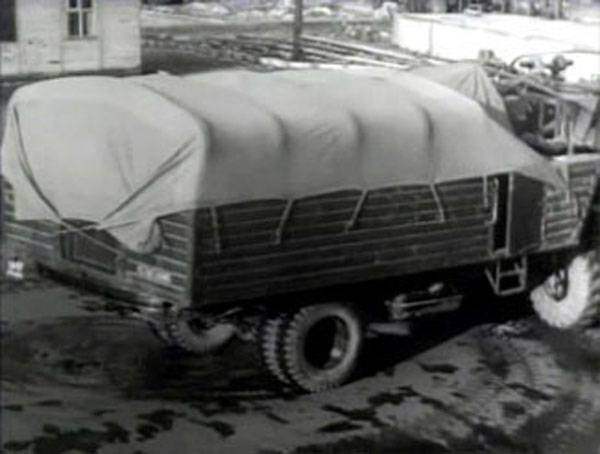
Chassis prototype, aft view
According to reports, was originally created version of the machine Br-257, externally and on the layout resembled trucks. It should have a relatively wide cargo platform and a two-axle chassis. In front of the machine, it was proposed to place a rotating unit with two wheels having the lowest possible track. This system was to be used as a leading and controlled axis. Such a prototype Br-257 / 9П114 had an onboard body and could be equipped with an awning.
Inspections of the first experimental sample showed that the project needs serious processing. The result of the continuation of the design work was the appearance of the second version of the Br-257, which was able to get the required units in the form of a launcher, etc. For this, we had to use a new version of the overall layout of the machine, which further reduced the size.
The basis of the 9P114 machine has become a two-axle wheeled platform with a characteristic layout. In front of the hull, behind a curved frontal part, a small cabin with crew seats was placed. To reduce the size of the self-propelled launcher had an open cockpit, not even equipped with a windshield. The driver's seat was placed at the left side of the car, next to the launcher and rocket. Behind such a compartment of management there was a compartment for accommodating the main equipment, including the power plant and the main hydraulic elements. At the rear of the case, mounts were provided for the guide. A characteristic feature of the Br-257 in the first version was the beveled shape of the rear, which served as the wings.
In the stern of the 9P114 / Br-257 machine there were mounts for a rocking launcher and some other special equipment. For example, jacks were placed there to stabilize the launcher during firing. The design of the guideline, with some modifications, was borrowed from the previous project 9K52. For installation on the new chassis, the beam rail was modified: first of all, its length was reduced. In addition, some elements of the mountings and the lifting system in the combat position were changed. In the transport position, the guide was laid in the corresponding chute in the roof of the car.
It was proposed to launch the launcher with the 407 horsepower M-45 gasoline engine, borrowed from the production cars of the Moskvich brand. With the help of such a power plant, the 9P114 machine could move at speeds up to 8 km / h. Due to the small volume of fuel tanks, the power reserve did not exceed 45 km. Such characteristics made it possible to carry out the transfer of a combat vehicle over short distances after unloading from a military transport helicopter. If necessary, the launcher could perform the functions of a towed transporter and move using a separate tractor. In this case, the towing speed with the rocket should not exceed 10 km / h.
The total length of the self-propelled launcher with regard to the guide was 8,95 m. Width - 2,43 m, own height - 1,535 m. The curb weight of the product was 4,5 t. Mass with a rocket - to 7,5 t. Due to such dimensional and weight characteristics, the 9ПХNNXX / Br-114 machine could be carried by existing Mi-257 helicopters inside the cargo compartment.
The 9K53 Luna-MB project did not provide for the development of a new ballistic missile. As weapons The new complex had to use the products of the existing model 9М21 with all available types of warheads. 9М21 was an unguided single-stage ballistic missile with stabilization in flight due to rotation around the longitudinal axis. The firing range could vary from 12 to 68 km.
Rocket 9М21 had a fairly simple design. In the assembled combat form, it consisted of a warhead with combat equipment, a rotation engine for preliminary promotion, and a cruising engine. The main units were placed inside a cylindrical body with a diameter of 544 mm. The length of the early versions of the rocket was 8,96 m. The tail of the X-shaped design had a span of 1,7 m.
Behind the head of the rocket body was placed a solid propellant rotation engine with nozzles mounted at an angle to the axis of the product. His task was to spin the rocket around the longitudinal axis immediately after descending from the guide. The central and tail parts of the hull were given under the main engine. Both engines used solid fuel. His total stock was 1080 kg. During acceleration, the main engine allowed the rocket to reach speeds of up to 1200 m / s.
The 9М21 missile could carry several types of combat units. Two variants of special warheads with a power up to 250 kt were proposed. Also high explosive-cumulative, high-explosive fragmentation, cluster and other variants of combat units were developed. The type of head used was determined in accordance with the combat mission.
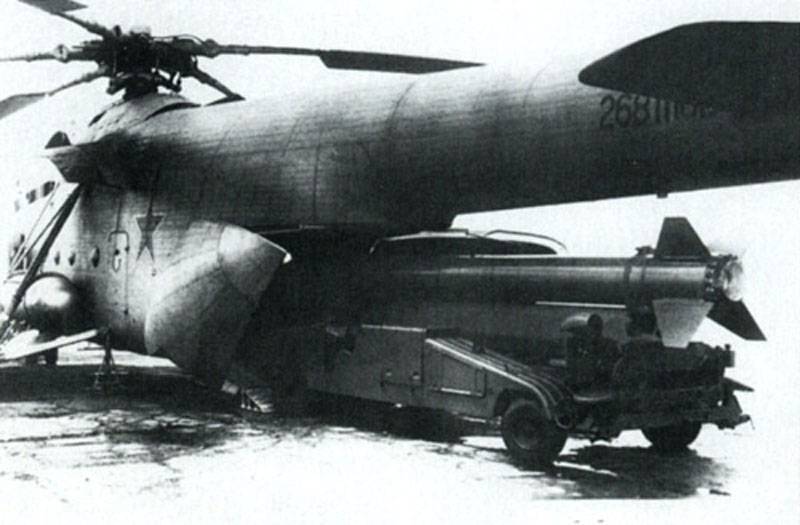
Loading the launcher into the Mi-6РВК helicopter
The design of the launcher continued until the beginning of the autumn 1964 of the year. After the completion of these works, the Barrikady plant assembled the first prototype, known as Br-257-1. Until early October, the prototype was tested at the plant, after which it was sent to the landfill. The new stage of inspections made it possible to identify the main pros and cons of a promising machine, which made it possible to continue work on the project. According to the test results, it was decided to refine some of the structural elements of the existing machine.
Soon the second prototype of the 9P114 launcher appeared, which differed from the first in the design of the case, in the undercarriage and other features. The updated project abandoned the relatively complex body shape with curved parts. The front sheet of the case was now flat, but it was still placed at an angle to the vertical, and the rear part received a box-like structure with a horizontal roof. Behind this unit appeared more pronounced details of the launcher. It was also decided to modify the design of the chassis. The rear axle retained small-diameter wheels, and larger ones installed on the front, equipped with developed lugs. Otherwise, the 9P114 / Br-257 launcher of the second version hardly differed from the base sample.
In 1964, the tests of the second prototype passed, which gave definite results. The results of these tests confirmed the fundamental possibility of operating the 9K53 “Luna-MV” missile systems in the army. In the future, it was decided to try out new equipment not only at the test sites, but also in parts of the ground forces.
The alleged use of the rocket and helicopter complex was as follows. With the help of a winch installed in the cargo hold, the launcher with the missile was to be loaded into the helicopter. Mi-6РВК could transport launcher 9П114 with the crew in the desired area, after which they were landed landing method. Having landed in a given area, the crew of the Luna-MV complex could proceed to perform a combat mission.
The self-propelled launcher could reach the firing position, determine its location and calculate the launching angles of the launcher. After that, it was necessary to prepare weapons for firing and launch a rocket. Then the combat vehicle could leave the firing position, returning to the helicopter or going to another area.
In theory, such a rocket-helicopter complex had great advantages over similar systems that existed at that time. The possibility of transferring launchers with missiles to the desired area significantly increased the mobility of the complexes, and also made it possible to choose the most convenient launch area, allowing to achieve the best results of the shelling. Moreover, with a certain approach, the 9K53 “Luna-MV” complex could be landed even in the rear of the enemy, increasing the depth of the strike. Existing systems, including the Luna-M complex, which also used the 9М21 missiles, did not have such capabilities, since they could only travel on the ground.
To carry out tests in 1964, the Barricades plant built two self-propelled launchers Br-257 / 9П114, differing in some design features. This technique was tested without serious complaints and could be used further. In 1965, the two prototypes found a new application. They were handed over to the troops for trial operation. Last lasted for some time and allowed to establish the pros and cons of new technology, as well as certain features of its operation.
After several months of trial operation, during which the military mastered the new self-propelled launchers and their means of transportation, it was decided to abandon such missile systems. Both cars from the complex "Luna-M" was written off. The fate of this technique is unknown. Probably, it was disposed of as unnecessary.
It should be noted that the rejection of the tactical rocket-helicopter complex 9K53 "Luna-M" was not associated with the technical shortcomings of this system, but with characteristic problems at the level of the concept itself. Combining helicopters and a missile complex in one complex had certain positive consequences in the form of expanding the range of tasks and increasing the depth of strikes. Nevertheless, the joint operation of such equipment turned out to be quite a complicated matter, and some of the shortcomings simply could not be corrected at the level of development of the technology of that time. For example, a light wheeled chassis could not carry a fairly complex set of navigational aids necessary for topographic targeting, which could adversely affect the accuracy of shooting, which left much to be desired without it.
In 1965, the rocket-helicopter complex 9K53 "Luna-MV" was accepted into a short trial operation. In addition, at that time several other variants of similar systems using missiles of other types were created. In the course of additional checks, it was found that an interesting and, as it seemed at first, a promising proposal has a number of characteristic drawbacks. As a result, the full operation of such missile systems was considered inexpedient. By the end of the sixties, the idea of rocket and helicopter complexes was completely abandoned.
Based on:
http://rbase.new-factoria.ru/
http://airwar.ru/
http://russianarms.ru/
http://militaryrussia.ru/blog/topic-192.html
Shirokorad A.B. Domestic mortars and rocket artillery. - Mn., Harvest, 2000.
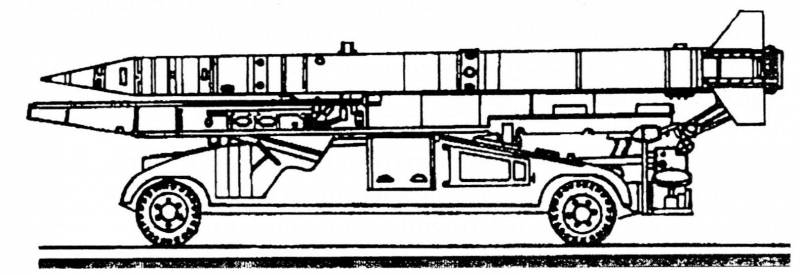
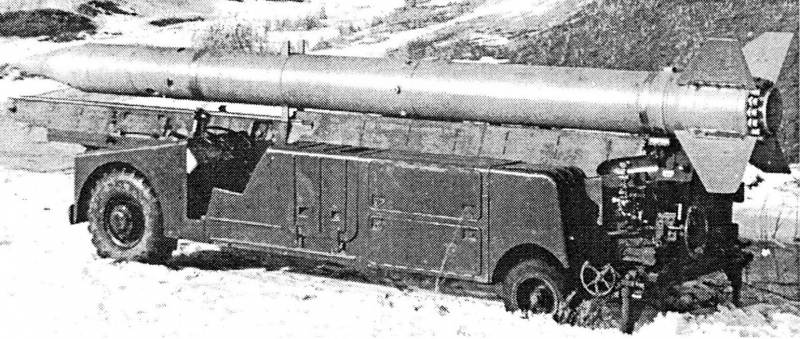
Information